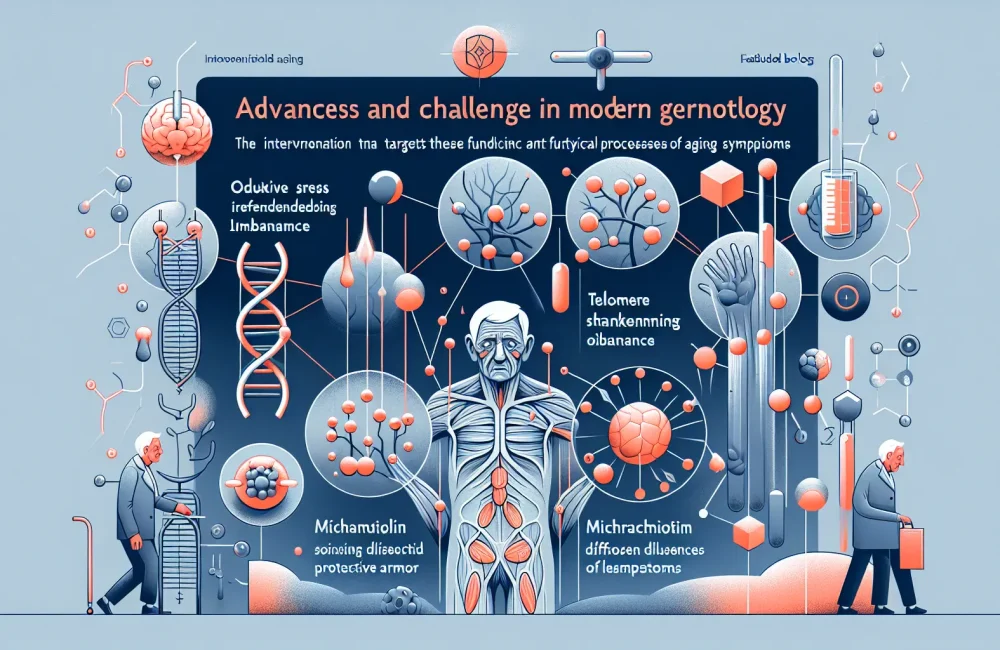By CAFMI AI From JAMA
Biological Mechanisms Driving Aging and Clinical Implications
Aging is a complex biological process influenced by numerous molecular and cellular mechanisms. The article highlights key contributors such as oxidative stress, telomere shortening, and mitochondrial dysfunction, which collectively drive the physiological decline associated with aging. Oxidative stress results from an imbalance between free radicals and antioxidants, leading to cellular damage and contributing to chronic diseases common in older adults. Telomere shortening, the progressive loss of protective DNA sequences at chromosome ends, is linked to cellular senescence and diminished tissue regenerative capacity. Mitochondrial dysfunction impairs cellular energy production, further accelerating age-related decline. Understanding these mechanisms is crucial for clinicians, as it frames age-related diseases not just as isolated events but as outcomes of interconnected biological deterioration. This knowledge underpins the approach to managing common conditions in geriatric patients, advocating for interventions that target these fundamental aging processes rather than only treating symptoms. For example, therapies aiming to reduce oxidative stress or preserve telomere length hold promise for slowing disease progression. Clinicians should thus consider these underlying factors when evaluating and planning treatment for diseases such as cardiovascular disorders, osteoporosis, and neurodegenerative conditions.
Integrative Management of Age-Associated Diseases
The article stresses the importance of an interdisciplinary approach to manage age-related diseases effectively, particularly dementia, cardiovascular diseases, and osteoporosis, which represent significant burdens in clinical practice. Dementia care benefits from not only pharmacological treatments but also psychosocial and cognitive interventions, requiring collaboration among neurologists, psychiatrists, geriatricians, and social workers. Cardiovascular disease management in elderly populations calls for tailored strategies that account for frailty, comorbidities, and polypharmacy risks, emphasizing lifestyle modifications alongside medical interventions. Osteoporosis treatment incorporates pharmacologic agents to improve bone density and prevent fractures, coupled with physical therapy to enhance mobility and reduce fall risk. The integration of interdisciplinary teams ensures a holistic approach that addresses medical, functional, and social aspects of aging. This strategy supports personalized care plans that improve patient outcomes and quality of life, encouraging clinicians to adopt models that foster coordination across specialties and care settings. Primary care providers play a pivotal role by orchestrating these multidisciplinary efforts, emphasizing the need for streamlined communication and patient-centered workflows.
Population Aging and Healthcare System Challenges
The demographic shift toward a rapidly aging population poses substantial challenges to healthcare systems worldwide, as detailed in the article. Increasing numbers of older adults translate into higher prevalence of chronic diseases and demand for complex care, stretching resources and requiring strategic health policy responses. Clinicians must anticipate greater clinical complexity, including multimorbidity and cognitive impairment, necessitating adjustments in care delivery models. The article discusses recent therapeutic advancements aimed at promoting healthy aging, including pharmacologic interventions such as senolytic agents and metformin, lifestyle modifications emphasizing nutrition and physical activity, as well as technologies like telemedicine and wearable monitoring devices that enhance patient engagement and self-management. Furthermore, it highlights the importance of recognizing social determinants of health that impact aging populations, such as isolation and socioeconomic factors, which influence outcomes and healthcare utilization. Effective management demands comprehensive care pathways that encompass prevention, early diagnosis, and ongoing support. Policymakers and healthcare leaders are urged to invest in workforce training, infrastructure, and integrated care systems to sustainably meet the needs of aging populations. Clinicians can contribute by advocating for resource allocation, engaging in continuing education on geriatric medicine, and implementing evidence-based practices tailored to elder care.
Read The Original Publication Here






